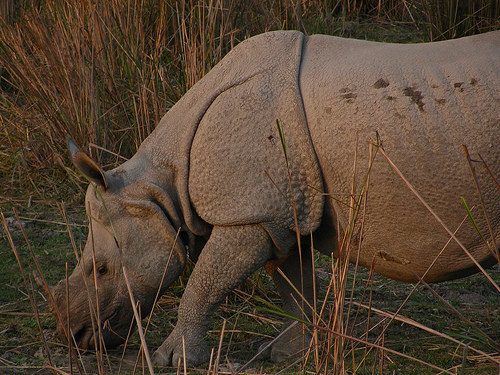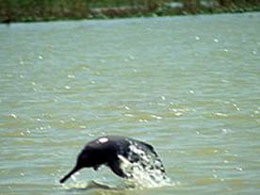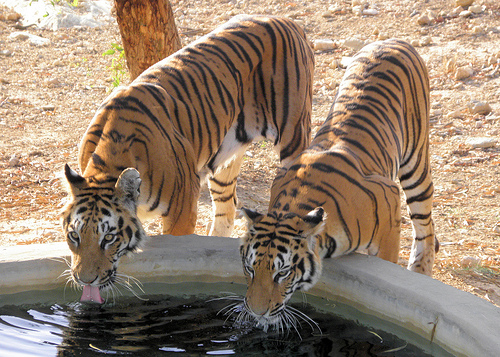There is a decomposed body of a rhino lying in the dim, dark jungles of Kaziranga National Park in Assam yet again. It is the 21st this year, to have become victim of a poacher’s greed. The air is filled with the nauseating smell of the decaying body – the missing horn conspicuous with its absence. Even as the latest census shows a rise in population of the endangered one horned rhinos in Assam, poaching is a persistent poison rapidly spreading its venom. Innumerable protective measures have struggled to save the animals and now new hope emerges in the form of conservation drones. Will the use of this latest technology finally guard the armoured beast? Let us keep our fingers crossed.

Since the beginning of 2013, news about rhinos of India has only been linked to death, torture, murder and brutal killing. In the last three and a half months, 21 rhinos have lost their lives in the hands of poachers, each killed for one petty reason – The horns that are supposedly invaluable medical remedies for a number of ailments.
Scientists are still puzzling over the true miraculous nature of these horns, and yet beliefs in certain parts of the world are so strong that everyday rhino horns are being traded in the illegal market for thousands and thousands of dollars.
Compared to Africa where last year the highest numbers of rhinos were killed since the past decade, the Asian rhino are still safe, but it is no justification for the brutality of the act they are subjected to in the hands of the poachers.
Poachers, sometimes with additional help from corrupt forest rangers and locals, keep track of adult rhinos in the jungles of Assam. Once a target is marked, the animal is either gunned down or merely dazed before the poachers chop the horn while the rhino is still alive! As the men run away with the loot, the animal is left to die, for a body part that is made of the same material as human keratin – the component of hair and nails!
Aerial eye on Terrestrial Monsters
As per the latest population census of the rhinos of Kaziranga, all is not black and gory in Assam though. The census conducted in March shows there are 2,329 rhinos in the Park. Last year the population was 2290. The fact that despite the killings the rhino population has improved shows that the effort of the park officers, locals and conservation organisations is not getting wasted entirely.
But can any news be good news if it is also scarred with news of tragedy ever so frequently? Compared to 22 rhinos killed in Assam last year, the figures have already reached 21 in 2013 in just 3 months!
The State government has now asked India’s Central Bureau of Investigation (CBI) to investigate three cases of one-horned rhino poaching. These are for the poaching cases that took place between July and September last year at Golaghat, Karbi Anglong and Nagaon districts.
But of greater significance now is the new defence mechanism called the drones.
In order to protect the rhinos more fiercely and to ensure better surveillance, the introductory test flight of the Unmanned Aerial Vehicle (UAV) was held in the Park on April 8 this year.

India’s Endangered carried the news of conservation drones a while back, signifying the importance of these aerial machines in fighting wildlife crimes. Read the entire story here.
Drones are unmanned planes remotely operated. They are equipped with cameras and can be monitored by security guards, who find it difficult to guard the whole 480-square km reserve.
“Regular operations of the unmanned aerial vehicles will begin once we get the nod of the Defence Ministry,” said Rokybul Hussain, the state’s forest and environment minister.
Drones have many advantages over human surveillance,
- They can cover a larger area in lesser than half the time taken by forest guards to patrol the reserve.
- They can fly over densely forested areas, where humans cannot.
- The drones observe the wild animals without disturbing or agitating them.
- They can be of much use during the annual floods of Assam when Kaziranga is drastically affected due to flooding of mighty Brahmaputra River and three other rivers that flow through the game park.
- Poachers can be located and caught in the act much faster.
In recent weeks, wildlife authorities in Assam have deployed 300 armed guards to protect the rhinos too but they have been no match for organised gangs of poachers who have been managing to strike at the rhinos with increasing regularity.
“What worries us is the use of automatic weapons like Kalashnikovs by the poachers,” said Assam police chief Jayanta Narayan Choudhury.
The poachers have a strong backing today of militant groups,and high profile business partners who can spend any amount to lay hands on the horn. The government and organisations therefore need to change their tactics and tackle poachers using similar strategy and technology. It is really these everyday battles between the good and evil that will decide whether the rhinos last or breathe their last in the jungles of Kaziranga, India.
More Related stories,
Poachers Now Using Children as their Ears and Eyes
Squatters and Solid Waste Threatening Rhinos of Kaziranga
Image via cc/Flickr by unlisted sightings and The Hindu






The Great Indian bustards, Houbara bustards, tigers, rhinos – they are all killed for the supposed aphrodisiac value of their meat and bones. How many of these innocent animals are going to be sacrificed for increasing man’s so-called virility? How much of man are you, in any case, when you butcher innocent creatures for attaining manhood?
Wow. What a brilliant way to put it. Thank you for the comment, pishi.